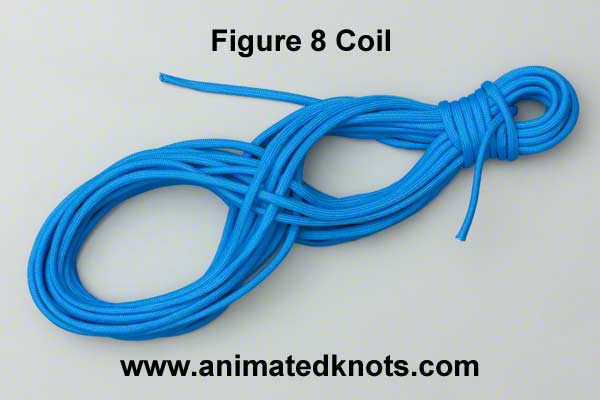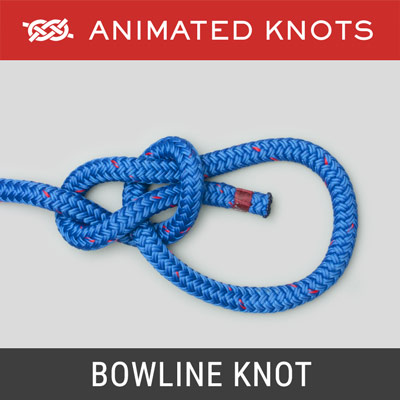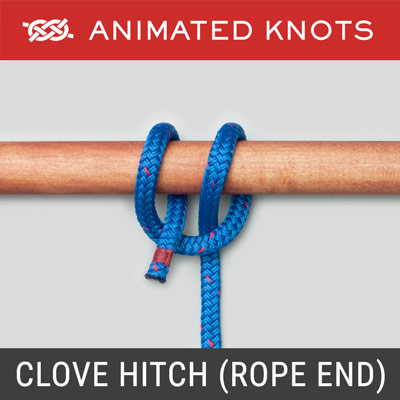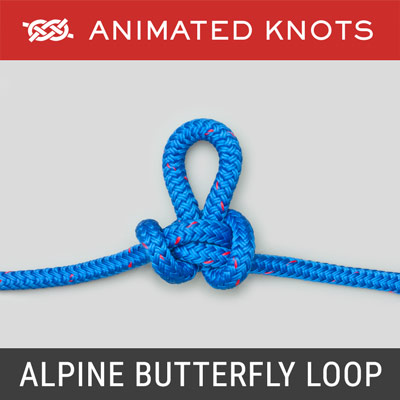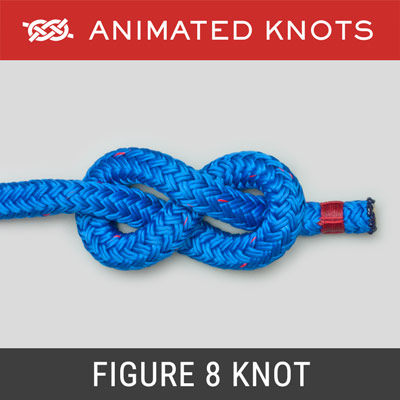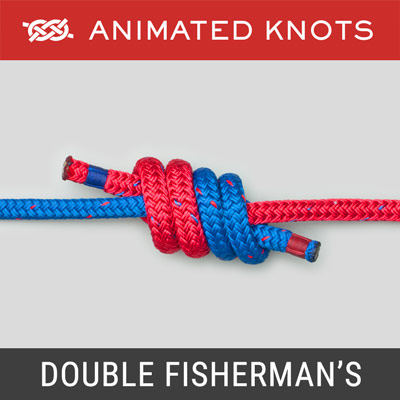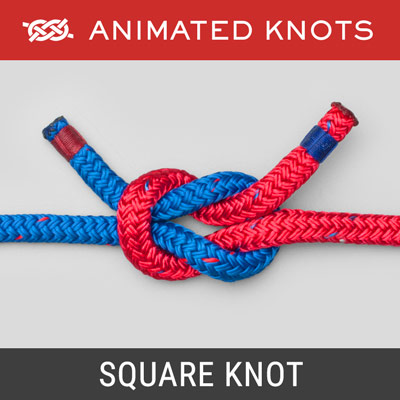Secure and neat rope storage, minimizes tangles and twists.
Coil Unattached Rope
Secure and neat rope storage, minimizes tangles and twists.
 |  |
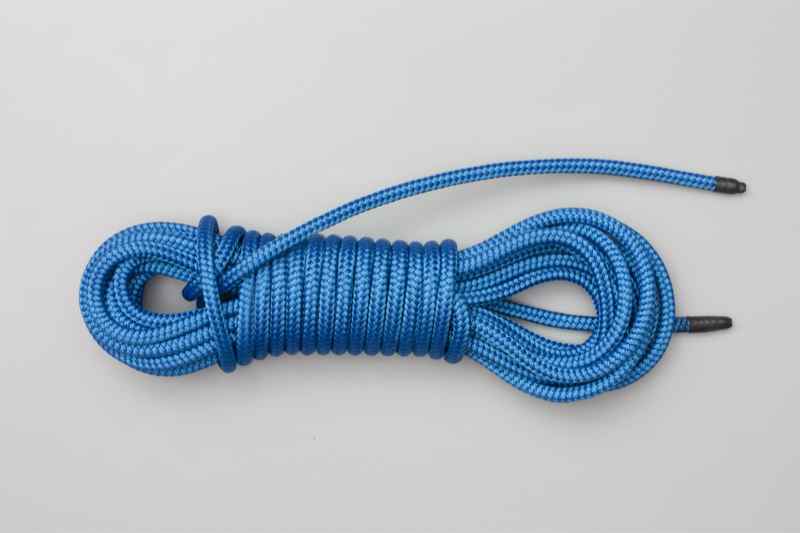
 |  |  |  |  |
To Step use Arrow Keys (
Uses: A free, or unattached, rope (like a climbing rope) is best stored in a neat coil (ABOK # 3089, p 513). The Rope Coil should be well secured so that it will remain tidily coiled and can be used quickly and easily without tangles or twists. This technique of coiling a rope is also known both as a Buntline Coil and a Gasket Coil Coil
Making the Coil: Start by leaving the end slightly longer than the coil – so it remains outside the coil to avoid tangles. To make each turn form a neat loop, twist the rope slightly as you lay it in your hand. To avoid introducing multiple twists, however, twist alternate turns in opposite directions. These alternate turns lie “under” the line rather than “over” it, as shown in frame 5 of the animation. Alternating over and under turns avoids the accumulation of multiple twists in the rope.
Finishing the Coil: The Rope Coil is finished by winding the rope tightly round the coil – with a finger (or your hand for large ropes) still inside the coil to maintain the lay of the turns. These turns start away from the end and work upwards towards your hand Finally, a bight is passed through the Rope Coil where your fingers were. The bight is spread out and tightened around the top of the coil to preserve this lay until you need to use the rope. Note: The last few wrapping turns do introduce twists into the rope. However, because only a short end is involved these twists are easily shaken out.
Using the Rope Coil: After unwrapping, the coil should be laid on the ground with the end used to start the coil underneath; because the end should have been “left outside the coil” at the beginning, it should remain undisturbed even if the rope is allowed to run out rapidly. The end used to wrap the coil should release without twists or tangles. The reason that this method of uncoiling is important is that it has to be used to allow a halyard to run freely and practice makes perfect.
Figure 8 Coil: Another popular technique for avoiding twists and tangle is the Figure 8 Coil: no twist is put in the rope as you form each turn. Instead each turn is laid as a stack of overlapping Figure 8 turns. The coil is completed in the same way. The resulting coil is not as neat but maintains the rope ready for use and likely to run out with no tangles.
Precautions: Avoid introducing twists by using either the Figure 8 Coil or the alternating over and under method shown in the animation. Closely observe any rope as it is paid out to ensure there are no kinks or knots.
Climbing Rope: A Climbing Rope is long and heavy and requires special coiling techniques. That is because when completed, the bulk of a climbing rope makes it hard to hold to complete the coil as shown in the animation. There are two common alternatives:
- Butterfly Coil: The Butterfly Coil is made behind your neck so the weight is taken on your shoulders. The Coil is made with the rope doubled. Starting from the mid point, the doubled rope is first laid loosely on the ground. Both ends are held in one hand – with about six feet (two meters) hanging free. The coil is formed behind your neck picking up the doubled rope first with one of your outstretched hands and then the other.
The result is a large coil, made up of double strands laid in a Figure 8 pattern, hanging from your neck. The coil is then folded at the mid point – where it passed behind your neck. The ends are used to wrap the coil and then tucked through and over the coil as shown in Frames 17 to 21. The finished Rope Coil can then be carried by tying the two ends around your body. - Mountaineer’s Coil: After the coil has been made, the end is passed through the center of the coil several times to wrap the turns and keep the coil neat. Because this technique requires the end to pass through the Rope Coil several times, when undoing the coil it is critical to carefully undo these wraps to avoid a tangle.
